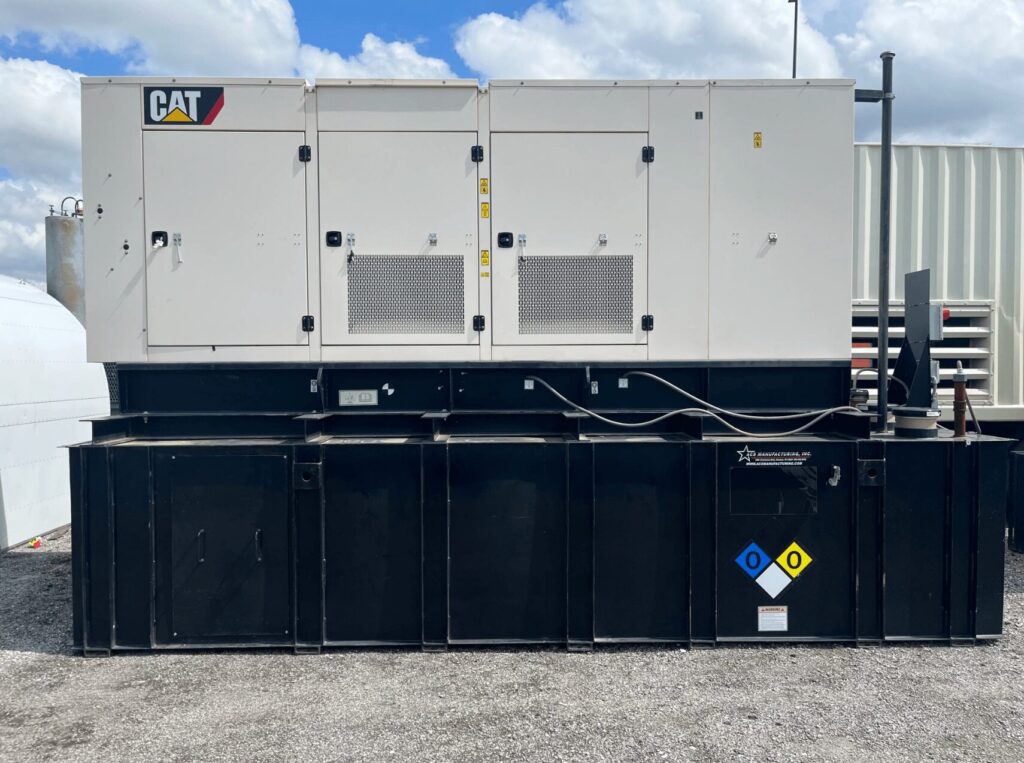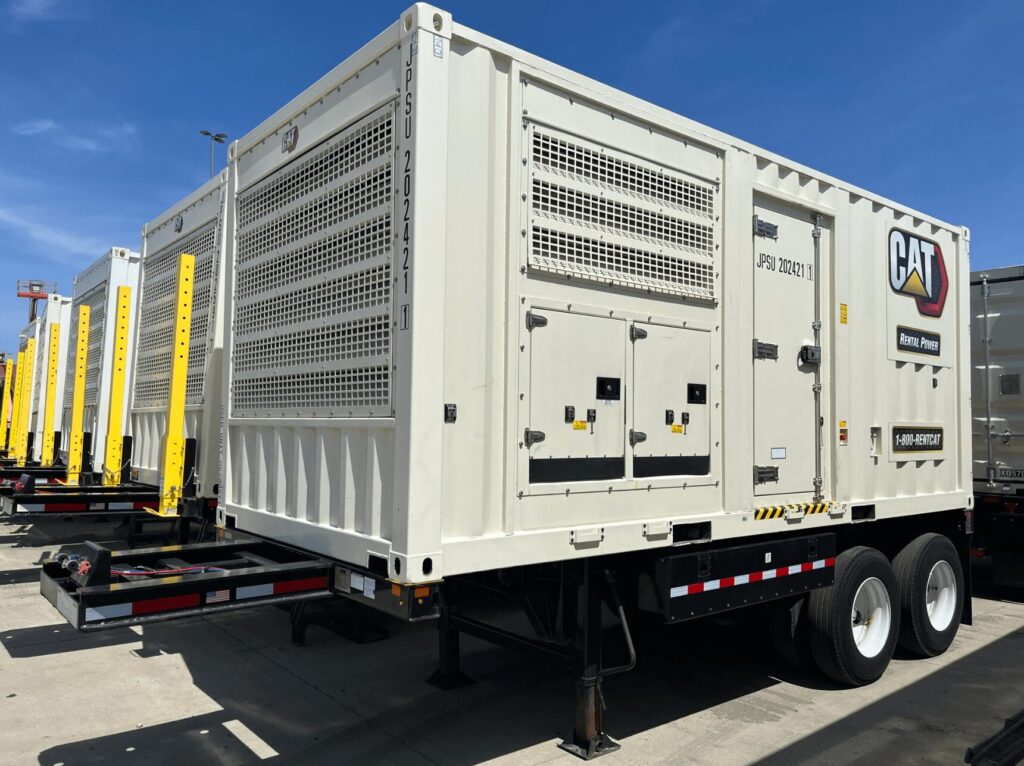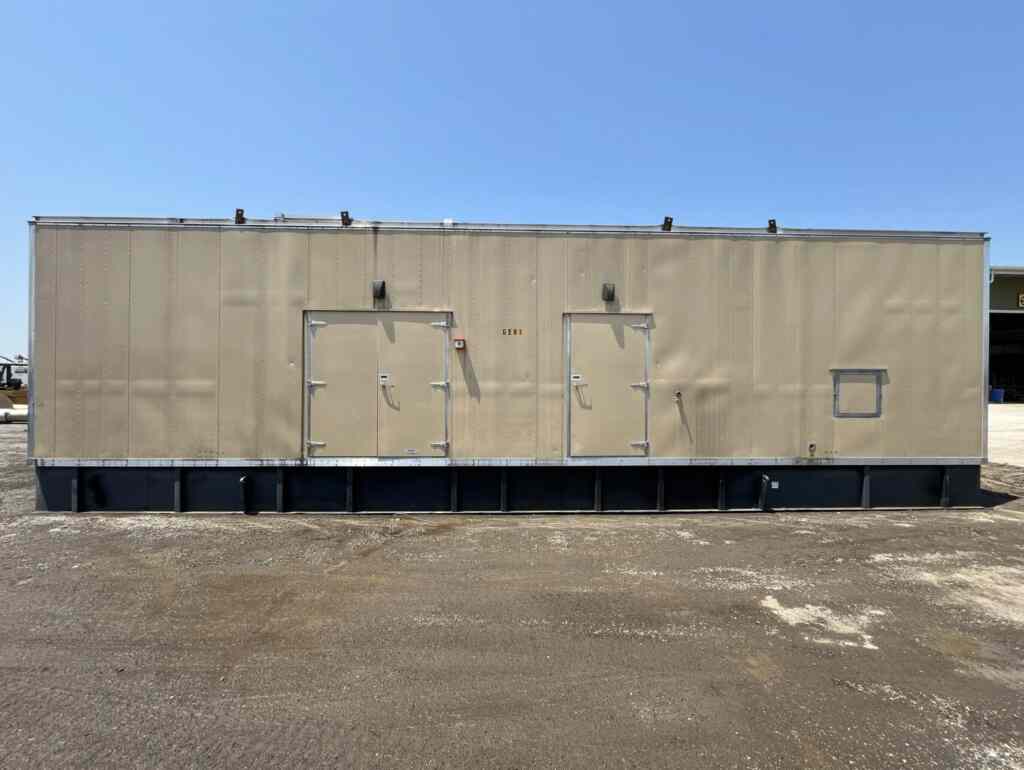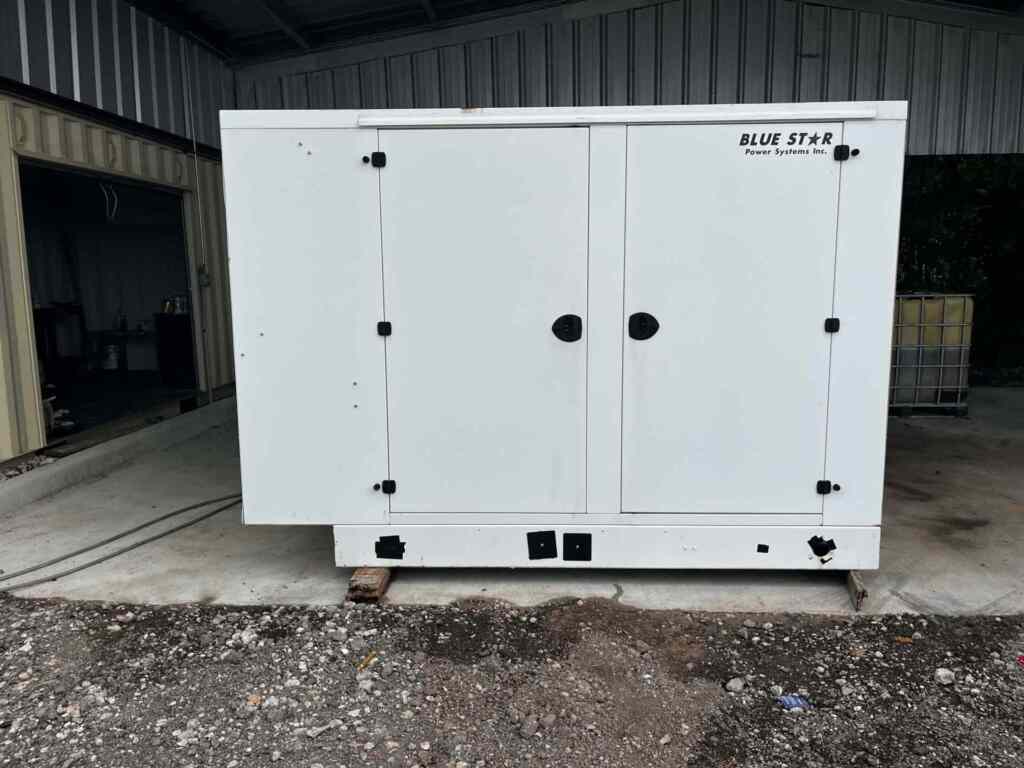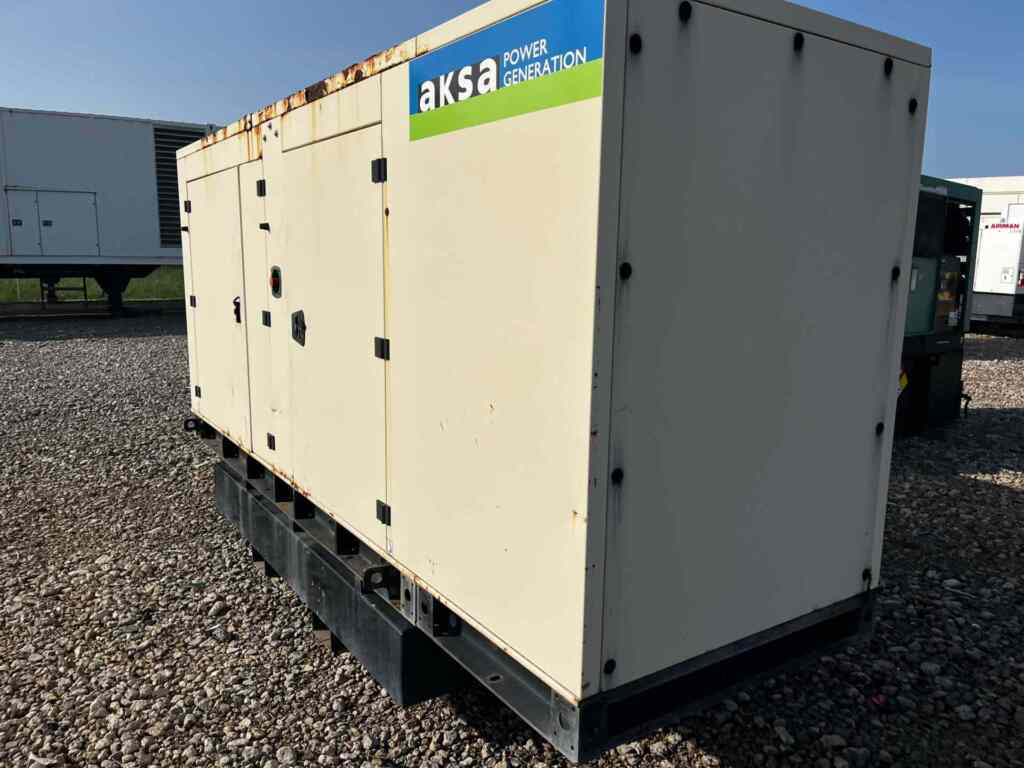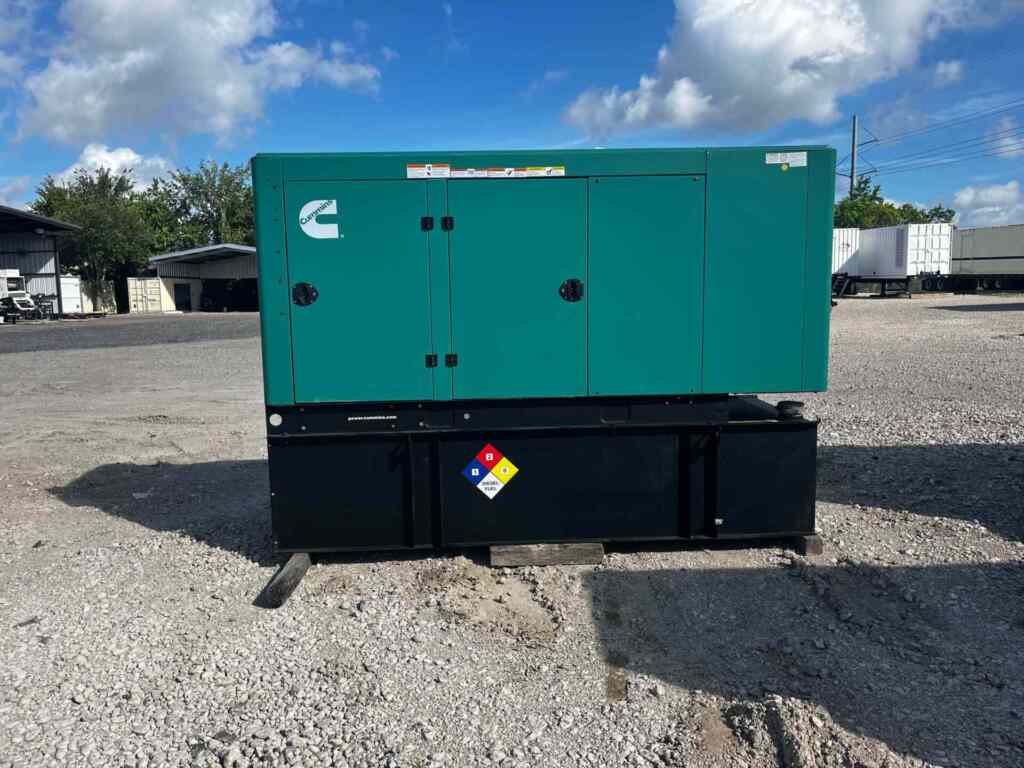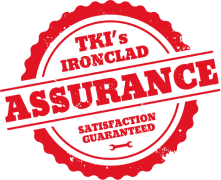Industrial generators provide dependable power solutions for many industries, supporting operations during outages or in remote locations. Key metrics like kilowatts (kW) and kilovolt-amperes (kVA) are essential for evaluating a generator’s capacity and suitability for a particular task. Alongside these primary metrics, considerations such as power factor, voltage, and frequency influence overall performance and efficiency. Understanding how these elements work together is vital when choosing a generator.
What Does kW Mean for A Generator Rating?
Kilowatts (kW) represent the real power output of a generator. This is the usable power supplied to equipment, appliances, and machinery. It indicates the actual work that a generator can perform.
For example, if a generator is rated at 600 kW, it means it can supply 600 kilowatts of usable power for running devices such as motors, lighting systems, and HVAC units. This metric is especially critical for determining if a generator can handle the combined load of all connected equipment.
When choosing a generator, always calculate your total power needs in kW to ensure the generator’s real power output is sufficient for your application. Keep in mind that factors such as startup loads (common in motors) may require higher short-term capacity.
Understanding kVA and Generator Ratings
Kilovolt-amperes (kVA) measure the apparent power of a generator. Unlike kW, this includes both real power (used for work) and reactive power (caused by inductive or capacitive loads). While reactive power does not perform useful work, it is essential for operating equipment like motors and transformers.
The relationship between kW and kVA is determined by the power factor (PF), expressed as:
- kW = kVA × PF
- kVA = kW / PF
Most industrial generators have a default power factor of 0.8. For instance, a generator rated at 750 kVA with a power factor of 0.8 delivers 600 kW of usable power. Understanding kVA is critical when sizing a generator for applications with significant reactive power requirements.
How Do Additional Metrics Affect Generator Performance?
While kW and kVA are the foundation of generator ratings, understanding additional metrics is essential for evaluating overall performance and compatibility with specific applications. These supporting metrics offer a more complete picture of a generator’s capabilities, enabling informed decision-making for businesses.
Power Factor (PF)
The power factor represents the efficiency of a generator in converting apparent power (kVA) into real power (kW). For industrial generators, a standard power factor of 0.8 is typical. This metric directly impacts the generator’s amperage and efficiency:
- A higher power factor indicates better utilization of the generator’s capacity.
- A lower power factor may require a larger generator to compensate for the inefficient use of power.
Accurately calculating power requirements is essential for selecting the right generator. Generator sizing calculators simplify the process by factoring in variables like power factor, voltage, and starting wattages to ensure your generator can handle the load safely.
Voltage Output
Voltage Output is a critical metric for ensuring compatibility between the generator and connected equipment. Generators are designed to deliver specific voltage levels, such as 120/240V for residential use or 277/480V for industrial applications. Properly matching the Voltage Output to the equipment’s requirements ensures:
- Safe Operation: Prevents damage to equipment due to voltage mismatches.
- Efficiency: Ensures power is delivered consistently and effectively.
- Flexibility: Many generators offer adjustable voltage settings to accommodate different operational needs.
Frequency (Hz)
Frequency, measured in Hertz (Hz), indicates the number of cycles per second in alternating current. Generators typically operate at:
- 60 Hz: Common in North America and parts of Asia.
- 50 Hz: Standard in Europe, Africa, and other regions.
The generator’s frequency must match the equipment it powers to prevent issues like overheating or inefficiency. For scenarios requiring adaptation between 50 Hz and 60 Hz, frequency conversion techniques can be employed to ensure compatibility with regional or equipment-specific needs.
Phase (Single or Three-Phase)
The generator’s phase determines its suitability for specific applications:
- Single-Phase Generators: Best for residential and small-scale commercial use, where power demands are minimal and not as complex as a larger operation.
- Three-Phase Generators: Ideal for industrial and commercial operations requiring high power output and stability, such as running heavy machinery or supporting large buildings.
Knowing the distinctions between single-phase and three-phase power is key to selecting the right generator for your needs. This choice ensures compatibility and optimal performance for the intended application.
Amperage (Amps)
Amperage refers to the current capacity of the generator, which is influenced by voltage, load, and power factor:
- Higher amperage is required for equipment with significant power demands, such as motors or compressors.
- Calculating amperage correctly helps prevent overloading the generator and ensures safe operation.
Amperage charts can simplify this process, offering guidance on how voltage and load affect current requirements.
Fuel Consumption Rate
Fuel consumption, typically measured in gallons or liters per hour, is a critical factor in estimating operational costs. It varies based on generator size and load levels:
- Efficiency: Lower fuel consumption reduces costs and environmental impact.
- Runtime Planning: Knowing the consumption rate helps schedule refueling intervals during extended use.
For example, a 600 kW generator consumes approximately 13.2 gallons per hour at 25% load and up to 42.8 gallons per hour at full load. This variation makes it important to consult detailed diesel fuel consumption charts to accurately estimate fuel needs and plan operational budgets. Such charts provide valuable insights for aligning generator capacity with specific load demands and optimizing fuel usage.
Noise Level (dB)
Noise levels, measured in decibels (dB), are a key factor to consider, especially in urban or residential areas:
- Smaller Generators (50 kW): ~85 dB, similar to city traffic.
- Larger Generators (1500 kW): ~105 dB, comparable to a jet engine.
To minimize disturbances, many areas enforce industrial generator noise regulations that set limits on operating decibel levels. Compliance can be achieved with tools such as enclosures, mufflers, and soundproofing, making generators suitable for hospitals, hotels, and other noise-sensitive environments.
Applications of a 600 kW Generator
A 600 kW generator is a powerhouse that provides reliable and efficient energy for a wide range of medium-to-large-scale industrial applications. Its versatility makes it an essential solution for businesses that require consistent, high-capacity power. Below are some industries and specific scenarios where a 600 kW generator excels:
| Industry | Applications |
|---|---|
| Agriculture | Powering irrigation systems, cold storage, and processing equipment. |
| Airport | Backup for terminals, runway lights, and control towers. |
| Banks | Ensuring ATM networks, data centers, and branch operations stay online. |
| Construction Site | Running heavy machinery, lighting, and on-site offices. |
| Cities & Municipalities | Providing power for public utilities, emergency services, and critical infrastructure. |
| Data Center | Maintaining server operations, cooling systems, and IT redundancy. |
| Educational Institution | Supporting critical facilities like labs, dormitories, and security systems. |
| Rock Crushing Industry | Powering crushers, conveyors, and support equipment. |
| Hospital | Ensuring life support, imaging equipment, and HVAC systems remain operational. |
| Hotel | Providing energy for lighting, HVAC, and essential guest services. |
| Mining Operation | Powering drills, pumps, and ventilation systems. |
| Oil & Gas | Supporting rigs, processing facilities, and pumping stations. |
| Rental Companies | Offering temporary power solutions for events, construction, or emergencies. |
| Telecom | Backing up cell towers, communication hubs, and data centers. |
| Water Districts | Powering pumps, treatment plants, and distribution systems. |
Partner with Turnkey Industries for Generator Solutions
Turnkey Industries is a trusted leader in the industrial generator market, offering pre-owned equipment tailored to diverse business needs. Here’s why you should choose us:
- Expertise: Over 15 years of experience in industrial generator solutions.
- Quality Assurance: Our generators are thoroughly inspected, serviced, and load bank tested.
- Immediate Availability: Generators are ready for deployment, backed by a 30-day warranty.
Whether you need to purchase a dependable generator, sell your current equipment, or rent a generator for short-term use, our team is ready to assist.
Get in touch with us today to discuss your requirements and learn how Turnkey Industries can support your power solutions.
 Turnkey Industries offers a variety of high-capacity
Turnkey Industries offers a variety of high-capacity 